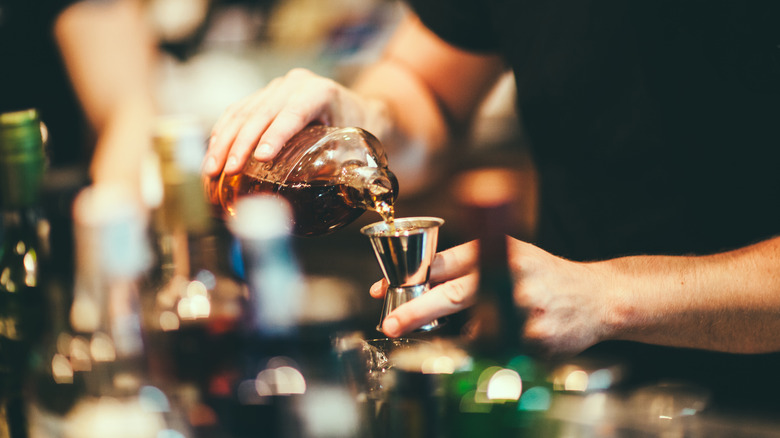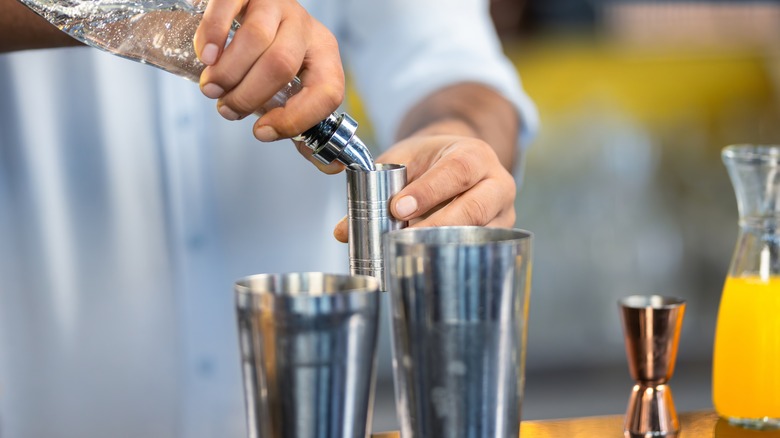Bars Use Standard Drink Measurements For More Reasons Than You'd Think
If you've worked as a bartender, you may be familiar with "free pouring," in which you count the seconds of a pour to measure liquor. Maybe you've even seen your local bartender "eyeball" different amounts in drinks. Most bars, however, use standard measurements for making cocktails. You may think bartenders who measure out liquor are only following a recipe for signature or complicated drinks, but there are more reasons bars use standard drink measurements than you might think.
One reason is to give customers exactly what they asked for. No patron wants to be shorted on their drink's alcohol, so measuring ingredients ensures that each cocktail is made to customer expectations and that drinks are consistent across the establishment. This also helps staff serve alcohol responsibly, which is a law in most places. Not only do they need to observe patrons for drunken behavior (at which point they should cut them off from purchasing more alcohol), but standard drink measurements give staff an estimate of how much a customer has had to drink within a specific time frame.
Another reason bars use standard drink measurements is to control their inventory. Consistent measurements prevent over-pouring and product waste. Also, bar managers can compare the liquor levels in stock to sales reports to make sure everything adds up. This will alert them to product loss, whether it's from staff making mistakes and wasting drinks or from theft (for example, staff giving away free drinks or drinking liquor themselves without ringing it up).
What are the standard drink measurements?
Drink standards vary from country to country, but in the U.S., a standard drink has about 14 grams of alcohol. This is roughly equivalent to a typical 12-ounce beer (5% ABV), a 5-ounce glass of wine (12% ABV), or a 1.5-ounce shot of liquor (usually 40% ABV). Not only do these measurements help staff serve patrons responsibly, but they're also helpful for customers. To drink responsibly, we need to know how alcohol affects us, as well as how much we've consumed within a given time frame. If a drink contains more liquor than you're used to having at one time, chances are you'll get drunker quicker, even if you stick to your typical ordering habits. Don't believe the alcohol myths, either — drinking coffee or vomiting won't un-ring that bell.
Most bartenders are familiar with the "tricks" people play to get around these standards and get extra liquor for free (just one of the reasons your bartender hates you). So, rather than trying to cheat the system by asking for "no ice," "light ice," or a "tall" in hopes of getting more booze (you won't), there are bartending terms you should know that make it clear how much alcohol you'd like. By asking for a double, you're indicating you'd like twice the standard pour, which would typically make it 3 ounces. If you want to go a little lighter on the booze, you can order a pony shot, which is typically just 1 ounce.

